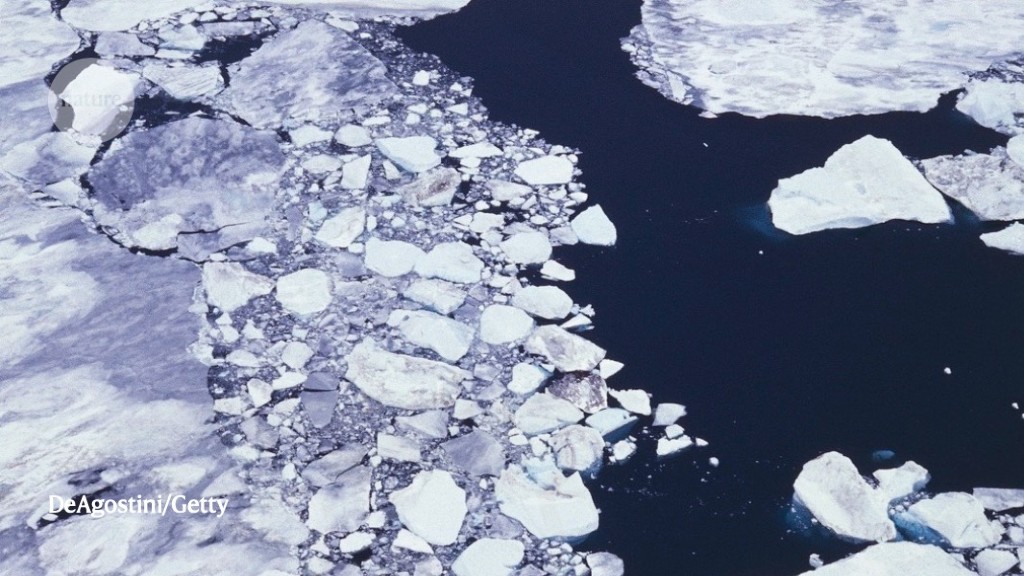

The Ross Sea (pictured) in Antarctica contains waters that are liquid even though they are colder than seawater's freezing point. Credit: DeAgostini/Getty
Ocean sciences
The Southern Ocean is riddled with supercooled stretches of liquid water that are colder than the freezing point.
Seawater generally freezes below –1.85 °C, but the icy waters around Antarctica can remain liquid even below that temperature. The subsurface melting of ice shelves can generate supercooled water, as can sea-ice formation. But the extent of supercooling around Antarctica has been unknown.
Alexander Haumann at Princeton University in New Jersey and his colleagues used data collected from research ships, autonomous floats and sensor-wearing Southern elephant seals (Mirounga leonina) to identify regions of the ocean where supercooling was occurring. They found that up to 5.8% of the analysed water profiles from the Southern Ocean had temperatures below the ocean’s surface freezing point, a far greater prevalence than expected.
In almost one-quarter of the profiles that showed supercooling due to sea-ice formation, the ultra-chilly water penetrated into the depths of the ocean. Such supercooled plumes could represent an important pathway for heat loss in the deep ocean that is currently not represented in climate models, the authors say.
October 22, 2020 at 12:05AM
https://ift.tt/35oQjTH
Brrrr! 'Supercooled' waters make nearby Antarctic seas seem balmy - Nature.com
https://ift.tt/2CoSmg4
Sea
/cloudfront-us-east-2.images.arcpublishing.com/reuters/CZF6NULMVVMEXHOP7JK5BSPQUM.jpg)
No comments:
Post a Comment